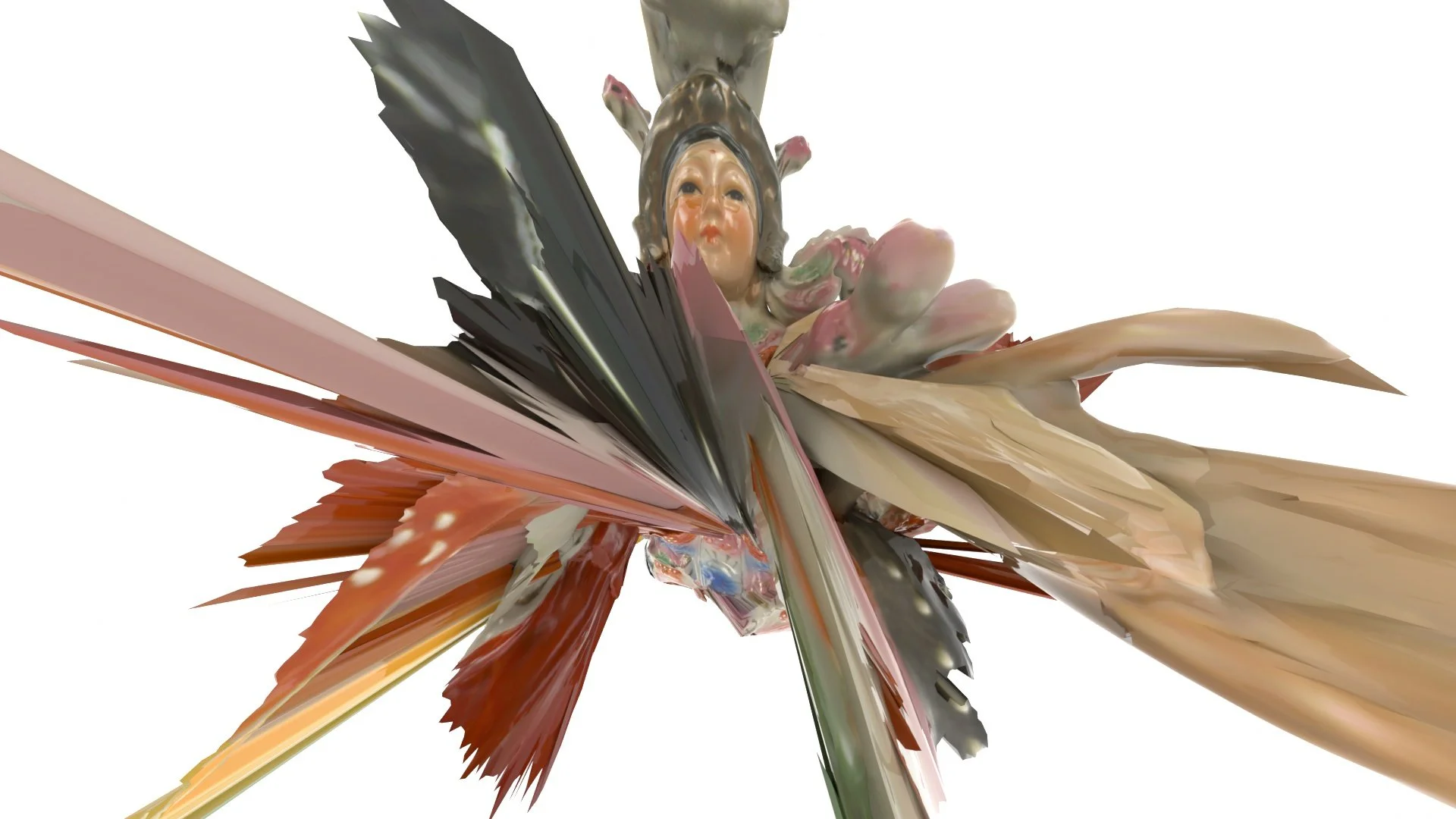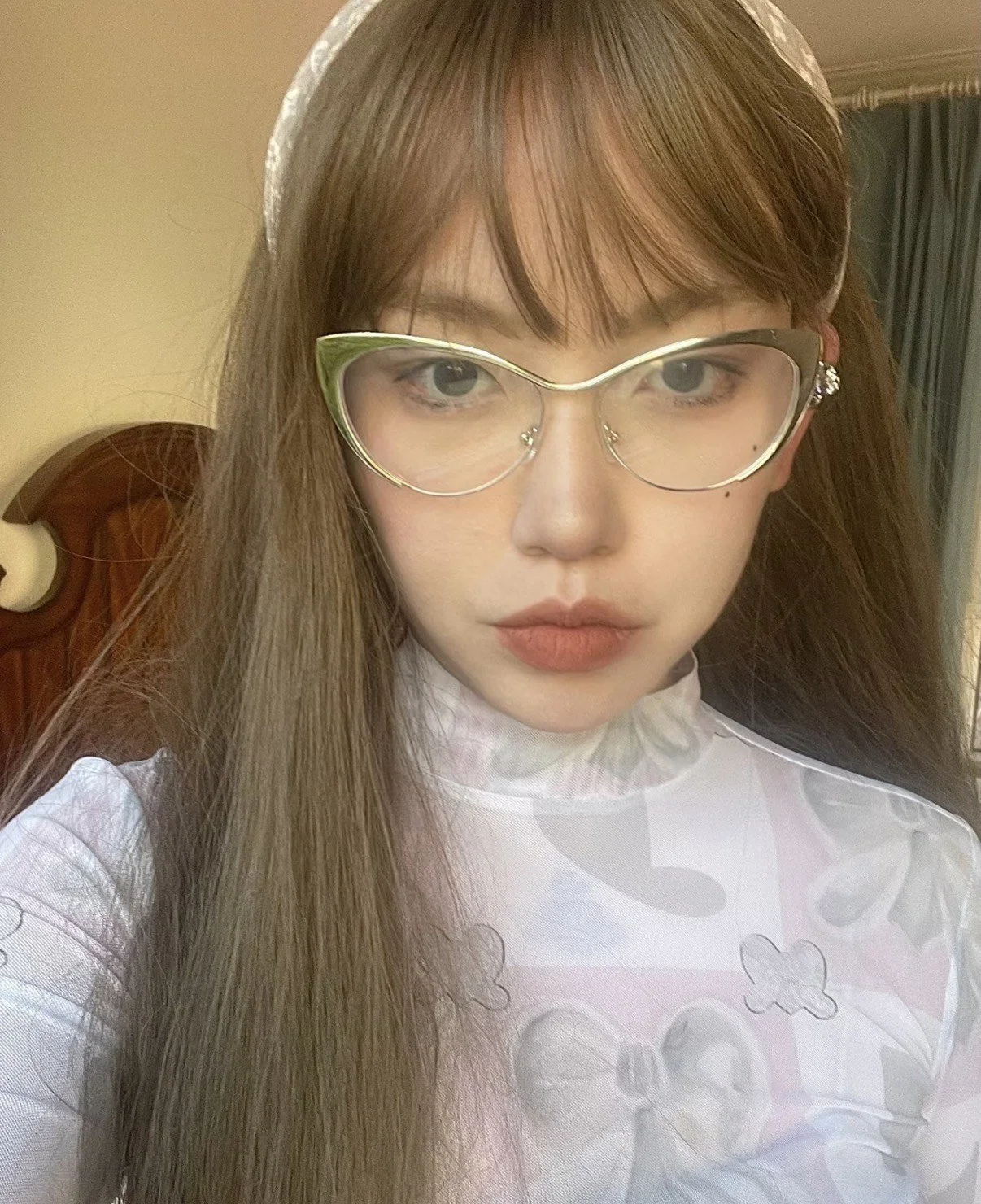MORE CARNAGE FEATURED: CALAYAH - “WHERE HAS THE GREAT MOTHER’S CHAIR GONE?”
What emptiness remains when the Great Mother’s chair is gone? In Calayah’s staged moment of levitation, a figure collapses without support. The missing chair is a silent question; the body’s fall a quiet cry of defiance.
The image opens like a wound. A figure — porcelain, spectral, almost divine — is hurled through a shatter of digital planes. Her face, calm yet ruptured, peers through a storm of fractured textures. Beige, rose, copper, and shadow collide in streaks, as if the digital surface itself has imploded under emotional pressure.
This isn’t a still image; it’s an act of detonation. The body no longer rests in representation but disperses through data, unfolding in vectors and shards. The maternal presence — the “Great Mother” — is here and not here, both relic and residue. The chair that once held her has vanished, leaving the figure suspended in code, her image stretched beyond recognition.
Calayah’s use of motion capture and digital distortion reveals not just the failure of systems, but the generative power of rupture. The glitch — those violent, crystalline spikes — becomes language. It speaks of collapse as creation, of beauty born in system failure. The body isn’t falling; it’s reassembling itself across multiple realities, defying containment.
Within the world of MORE CARNAGE, this work is pure voltage. It rejects polish, worships fracture, and holds grief in motion. It mirrors our collective unseating — from identity, from technology, from stability itself — and finds an awful, shimmering grace in the debris.
ABOUT CALAYAH
Calayah (b. 2000, China) is a London-based digital performance artist and curator whose practice explores how the fragility and unpredictability of the human body can intervene in the rationalized structures of digital space. Drawing on performance art’s core elements—presence, contingency, and improvisation—she uses motion capture, VR, and glitch aesthetics to disrupt the seamless order of technology and expose its fractures.



